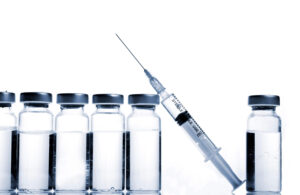Chemical Peel Differences
A chemical peel, or derma peeling, is considered by the American Society of Plastic Surgeons to be one of the least invasive ways to improve the appearance of skin. Typically applied to the face, a chemical peel enhances and smoothes the texture of the skin to remove the damaged outer layers. It is an effective treatment for wrinkles, facial blemishes, and uneven skin pigmentation. Today, chemical facial peels have grown in popularity because they offer near immediate results and can be performed as an outpatient procedure. How much skin they remove and how deep they penetrate will depend on the type of peel used, its strength and how long it is left on the skin. There are three types of peel: superficial, medium and deep.
Superficial or Light Peel
Superficial, or light peels, are the gentlest type of chemical peel and can be applied to all skin types. They are used to treat fine lines and wrinkling, areas of dry or flaking skin, uneven pigmentation, and mild acne scarring. By removing the top layer of the skin, known as the epidermis, superficial peels give the skin an instantly brighter look as well as a smooth, even texture.
With a superficial peel, a chemical solution is applied to the skin. The solution used is usually comprised of alpha or beta hydroxy acids, such as glycolic, lactic, salicylic, or even fruit acids, and is left on the skin for several minutes. Water or alcohol may be used to neutralize the acid and end the chemical reaction, then it is wiped off. A handheld fan can help cool the skin and relieve any discomfort. Repeated treatments are usually recommended to achieve the best results.
Superficial peels are painless, with only a slight tingling or stinging sensation, and are done on an outpatient basis without the need of anesthesia. The skin heals quickly afterwards making them ideal for people who want the benefits of a facial peel but do not wish to spend the time required to recover from a deeper peel. The skin may be mildly irritated afterwards and may result in some mild flaking of the skin, but this can be disguised with make-up.
Medium Depth Peel
Medium depth peels give more dramatic results than superficial peels and are the preferred choice for patients with darker skin. They penetrate deeper in to the skin and can be used to treat fine surface wrinkles, superficial blemishes, and pigmentation problems. Similar to the light chemical peel, medium chemical peels require less downtime than a deeper peel.
The procedure used for a medium peel is similar to that of a superficial peel, but the chemical may be left on for a longer period of time. Additionally, Trichloroacetic acid is the main peeling agent used for medium peels. It’s stronger and penetrates the skin more deeply causing a second-degree burn of the skin. This results in a slightly more painful procedure than superficial peels. A patient may be given a pain reliever and an oral sedative to reduce pain and anxiety during the procedure. Cool compresses and fans can be used to cool the stinging and burning caused by the chemical. The procedure takes about 30-40 minutes.
Like a superficial peel, medium peels are usually done on an outpatient basis and there is little or no pain after the procedure is finished. The downside is a longer recovery with more side effects. The skin can become swollen, pink and itchy following treatment and result in more peeling of the skin. Patches of brown and white skin can form during the healing process. The new layer of skin appears three to seven days after treatment and the skin will be fully healed about two weeks later. Retreatment may be needed after 3 to 6 months to produce the best effect.
Deep Peel
Deep peels are the strongest type of chemical peel available and are used to treat severe scarring and wrinkles, long-term sun damage, pronounced pigment changes, and lesions and growths on the skin. They are done only on the face are not done on darker skin types, as the procedure can bleach the skin. Because of this, prospective patients should seek advice from a qualified cosmetic dermatologist before undergoing the procedure.
The chemical used for deep chemical peels is phenol acid, or high strength TCA, to penetrate the dermal layers which causes a second-degree burn of the skin. While a deep chemical peel produces the most dramatic, longest-lasting results, the procedure takes longer than other peels (one to two hours) and causes the most pain. Because of this a patient may be given oral sedatives, pain relievers or general anesthesia. Tape or ointment may be applied to the skin after the peel to treat deeper problem areas.
Deep chemical peels are generally the most expensive and requires the most healing time. The treated area will be very red and feel almost like it is sun burnt after treatment. Skin may be swollen for a couple of days or scab. A lot of peeling and skin irritation may also occur. The new layer of skin will begin to appear one to three weeks after treatment, though complete healing can take several months. Oral pain relievers may be given to reduce pain after the peel. Patients typically take 2 weeks off from work after undergoing a deep chemical peel. A deep peel can generally only be done once in most cases.
To learn more about the different types of chemical and facial peels, including glycolic acid chemical peels, TCA chemical peels, and phenol peels, contact the skin care experts at Davis Dermatology.
3 Non-Surgical Treatments to Lift, Firm and Contour Your Neck
Sagging skin, creases and wrinkles in the neck and chin area are some of the most common age-related cosmetic concerns among both women and men. Fortunately, there are several non-surgical neck contouring and double chin treatment options that don’t require extensive downtime.
Continue Reading 3 Non-Surgical Treatments to Lift, Firm and Contour Your Neck
7 SIGNS IT’S TIME TO SEE A COSMETIC DERMATOLOGIST [Infographic]
How do you know when it’s time to see a cosmetic dermatologist?
Continue Reading 7 SIGNS IT’S TIME TO SEE A COSMETIC DERMATOLOGIST [Infographic]
BOTOX® for Migraines and Sweating
While best known for its ability to reduce wrinkles, BOTOX® is used for more than just cosmetic purposes. BOTOX is also FDA-approved to treat migraines and excessive underarm sweating.
So, how does BOTOX work for chronic migraines and sweating? What can you expect during a therapeutic BOTOX appointment? Keep reading…









